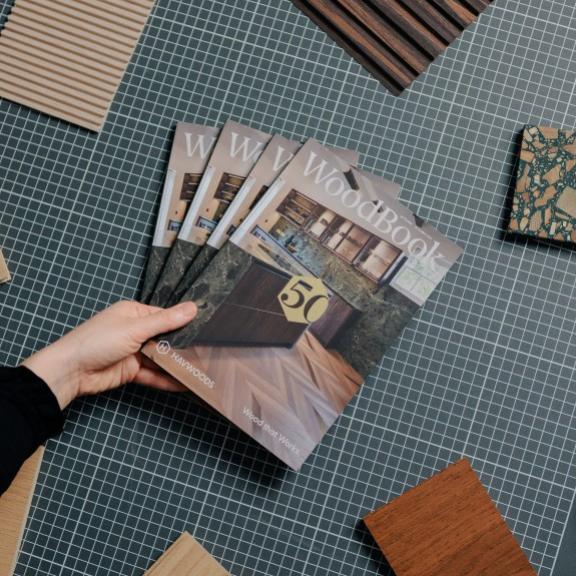Professional Practice Series: Approvals and Certifications

Aims
You should be familiar with the legislation required for your project and be able to advise clients on the application processes. Be conversant with the following approvals and certifications:
- Planning permission including Listed Building Consent
- Party wall agreements
- Landlord’s Licence/ approval to alter
- Building Control and Warrants & Engineering approval for structural changes
- Asbestos
- Rights to Light
- Image copyright
- Demonstrate the ability to cross-check tenders

Objectives
- List the legislation that interior designers need to be familiar with
- Outline what each approval or certification requires
- Clarify when a specific approval or certification should be sought

Listed Building Consent
Listed Building Consent is required if you want to change or extend any listed property

What is a listed Building?
Buildings of architectural or historical interest. All actions which potentially alter this must have the approval of the local authority.

Undertaking any work without Listed Building Consent may result in:
A criminal charge
The requirement to return it to its previous state before the work
was undertaken

Check with the Local Authority Conservation Officer to determine if planning consent is also required.

There will be variations between local requirements and the grade of listing the property has received (Grade I, II* or II). Some alterations require notice only if there are changes to the exterior, and some (such as Grade I) have this requirement for any changes.

Early discussions with the Conservation Officer may help to clarify what may or may not be acceptable and consequently avoid abortive conservation/planning applications. In making the decision, any planning authority has to decide how important it is to retain and preserve specific features.
Listed Building Consent
Materials
- Repairs are generally excluded from Listed Building Consent provided that the materials used, match as closely as possible the original materials used (e.g. a rotten wooden window frame could not be replaced with a UPVC one).
- In all alterations where consent is required, the closer the match to the original materials used, the greater the chance of a successful planning application.
Retention of Features
- Retaining features of architectural or historic interest is central to Listed Building Consent and plans that permanently destroy features are unlikely to be successful.
- Features may be retained by creative covering or building structures within a room which would allow the features to re-emerge at a later date if required.
- Building Regulations apply to all listed buildings but in the event of a conflict between Building Regulations and Listed Building Consent, the latter is likely to dominate to avoid the destruction of features. Any issues of Health & Safety would need to be accommodated by other means to avoid any destruction.
Key features of Listed Building Consent

Discuss your ideas with the Local Authority prior to making an application

Download a Listed Building Consent form from the Local Authority website

Replicate materials as far as possible

Avoid destruction of existing features in the plans

Consider traditional construction techniques that will contribute to the longevity of the building

Consult with specialist skills providers where necessary
Party Wall Agreements

A party wall is a wall between two properties which have different owners. The wall itself may have shared ownership or may be owned by one party solely. The wall may be positioned solely on one person’s property or may have a boundary through the middle of the wall. Party wall agreements also cover fences.
"The Party Wall Act provides a framework for preventing and resolving disputes in relation to party walls, boundary walls, and excavations near neighbouring buildings.”
A building owner proposing to start work governed by the Act must give adjoining owners notice of their intentions as set down in within the Act. Adjoining owners can agree or disagree with what is proposed. Where they disagree, the Act provides a mechanism for resolving disputes.
The Act is separate from obtaining Planning Permission or Building Regulations approval.
The Act aims to produce a written agreement
- Start with a verbal discussion regarding your intentions.
- Written notification should be sent 2- 12 months before the work is scheduled to begin. It should include detailed information about the nature of the work and the written agreement documented for all parties. The Government provides sample letters and guidance for this agreement.
- Surveyors are often required to report both before works begin and after they have been completed. How this expense is covered will form part of these arrangements.
Party Wall Agreements
The Act covers:
- new building on or at the boundary of 2 properties
- work to an existing party wall or party structure
- excavation near and below the foundation level of neighbouring buildings
Work likely to require Party Wall Agreements include:
- building a new wall on or at the boundary of 2 properties
- cutting into a party wall
- making a party wall taller, shorter or deeper
- removing chimney breasts from a party wall
- knocking down and rebuilding a party wall
- digging below the foundation level of a neighbour’s property
Landlord’s Licence to Alter
If you are making changes to a rented property, then a Licence to Alter is a likely requirement. This will vary according to the lease but this licence is essentially the landlord giving permission for the alterations to occur and protects the landlord’s interest in a tenanted property.
Types of work that require a Licence to Alter include:
- Changes to sanitary fittings
- Installation of new heating systems
- Structural alterations
- Changing the flooring
- Moving internal or external walls
- Making changes to windows or doors
- Changes to finishes
The Process
An application for a Licence to Alter may include the following:
- A description of the works to be undertaken
- Drawings showing the existing structures and layouts and the proposed plans
- Structural drawings showing measurements and calculations
- Drawings indicating all the building services
- Detailed specifications
- Risk assessments and construction methods
- A copy of the F10 notification
- Evidence to insurance that protects not just the tenant’s property but other property (e.g. adjacent apartments)
- Evidence of planning permission and other statutory approvals and certifications
- Evidence of compliance with the Party Wall Act, if applicable
The Licence documents agree on changes and the conditions under which the alterations must be carried out. The Licence itself will contain the following information:
- The work which has been agreed
- The working conditions for the works – (e.g. working hours, cleanliness and noise)
- A requirement to comply with all statutory obligations
- Insurance requirements
- Costs including those incurred by the landlord which may be chargeable to the tenant
- Provisions of all drawings and specifications
- The requirements to reinstate the works at the end of the project (only if this is a requirement)
Consultation with professionals will be necessary to ensure that you are protected.
The landlord may require specific surveys in order to be able to sign off on the Licence to Alter. For structural changes, the engineer will need to ensure that other tenants will not be adversely affected and that the building is structurally sound.
The landlord’s solicitor will draw up the Licence to Alter after liaising with their surveyor and will then submit it to the landlord and then to the tenant for signing. As indicated, the terms of the lease will determine whether a Licence to Alter is required.
Landlord’s Licence to Alter
There are usually 3 common factors found in leases which relate to a Licence to Alter.
- Absolute covenants prevent and prohibit any alterations. Consequently, alterations may only occur if the landlord waives this clause.
- Qualified covenants allow alterations to occur but only with the landlord’s consent.
- Fully qualified covenants allow changes to be made with your consent but for which consent may not be withheld for reasonable alterations.
In cases relevant to points 1 or 2 above, the landlord does not have to give consent. Where point 3 above is applicable the landlord cannot unreasonably deny consent and if the alterations relate to meeting statutory requirements, then approval must be given.
The landlord’s solicitor will only finalise the Licence to Alter once all elements of the work have been completed to the terms of the agreement and after a Completion Report has been submitted by their surveyor.
Failure to meet the conditions may result in the landlord requiring compensation and the property to be returned to its original state.
Building Control & Warrants & Engineering
If a design project involves the construction, extension, or alteration of a building, then it is likely that Building Regulation Consent will be required under the Building Regulations Act 2010. Building regulations are the minimum standards for design, construction, and impact alterations on virtually every building.
You can apply to any local authority building control department or Approved Inspector for building regulations approval. If you are unsure whether or not you need approval, you should check with the local authority.
Building Control & Warrants & Engineering Approval for Structural Changes

Replacing fuse boxes and connected electrics

Changing electrics near a bath or shower

Installing a fixed air-conditioning system

Installing or replacing a heating system

Installing a bathroom that will involve plumbing

Replacing windows and doors

Replacing roof coverings on pitched and flat roofs

Adding extra radiators to a heating system
How to apply
Contact a ‘building control body’ (BCB) to check the building regulations or apply for approval. Please note that rules differ in Scotland and Northern Ireland.
Where to apply
There are 2 types of BCB. It’s up to you which you use.
- Local authority BCBs – you can apply for approval from your local council.
- Private BCBs where you apply through a private approved inspector.
Either will tell your local authority about the work. This is called giving an ‘initial notice’.
Choose a type of application
You must decide on the type of application for your planned build, extension or alteration work.
Full plan
This is the most thorough option. You can expect a decision within 5 weeks or 2 months with your consent. You’ll get a completion certificate within 8 weeks of completion of the building work as long as it is compliant with the consent.
Building notice
This type of application is only for smaller projects. You can start work 2 days after your notice has been submitted to your BCB. You do not receive the formal approval of a full plans application.
Regularisation
You can apply for ‘regularisation’ - retrospective approval for work already carried out without consent - from a local authority BCB only. However, other works may need to be carried out before a completion certificate is given.
Asbestos
If Asbestos containing materials (ACM) are known or may be present at a design project location, then an asbestos survey must be completed before any other work can take place. There are two types of surveys:
- Management Survey
If there is no structural work planned, then a management survey can be undertaken to ensure that:
• There is no accidental disturbance of the asbestos-containing materials
• The ACM remains in good condition
• No one is exposed to harm for the duration of the project
This survey involves confirming the location of all the asbestos-containing materials and an assessment of any damage to the ACM through the building works or through the use of equipment and machinery. This is assessed in relation to minor disturbances to the ACM to determine if asbestos fibres could be released into the air.
- Demolition or Refurbishment Survey
Where demolition or refurbishment is planned, then a Demolition or Refurbishment Survey is conducted. In this survey designers must:
• Engage a specialist surveyor to ensure that all asbestos-containing materials are located.
• Ensure no one is harmed or put at risk by the removal or demolition work.
• Ensure that removal is undertaken by a specialist contractor qualified to perform this task.
• Ensure the area is vacated prior to removal.
• Gain certification that the area is “fit for occupation” once the removal has been completed.
• Ensure the specialist contractor has properly filed the removal certificates with the relevant authorities.
Rights to Light
According to the Law Commission, generally, people don’t have a right to light. The law has to balance the need for new buildings with the need to maintain light for existing buildings and whilst the planning system gives the protection it does not give rights. When planning permission is applied for, the planners will want to see evidence of the impact of the plans for existing properties. For residential properties, local authorities may use “Site Layout Planning for Daylight and Sunlight: a Guide to Good Practice” (BRE daylight & sunlight) to help in this process. In commercial buildings, there is a greater assumption that artificial light will be used.
Easement of light is where one landowner uses the “use” of a neighbour’s land for the passage of light to his or her window. This means that there is a right to prevent a neighbour from obstructing light to a window.
This is about reaching an agreement between the two parties with the assistance of the local authority planners and may result in one of 3 outcomes:

It has been recognised that the right to light is perceived as having a monetary value and opposition to plans has been used to increase compensation payments to avoid project delays. Designers should be aware of these difficulties and the need to work with planners and neighbours to gain a satisfactory resolution.
Copyright
The laws regarding Copyright are extensive but for the interior designer there are two main areas to consider:
- Imagery – commonly used to market their services and demonstrate their experience and style
- Bespoke furniture design where a client wants a similar piece either at a lower price point or with slight amendments
Imagery
Some images on the web are copyright free and can be used at will, others require payment. However, designers are most likely to want to use images of projects they have completed, and to do that they require the permission of the client. This will normally be agreed upon at the contract stage, waiting until the end to gain approval may cause major problems. The client should sign a release that allows the designer to use the images and there should be agreement about how the images are used i.e. just on their website or in publicity materials that have a wider coverage.
Bespoke Furniture
Copyright laws changed in 2016 to bring them in line with the EU, making it illegal to copy designs for 70 years after a designer’s death. Previously it was 25 years from the design launch. This has had a major impact on copy design e.g. the Eames chair or the Barcelona chair, both of which were widely copied and produced at a significantly lower price. This purchasing route is now illegal.
According to the Office of Intellectual Property Guidelines, “there is no statutory definition of a work or artistic craftsmanship” but the guidelines go on to say “as a first stage in any infringement claim, the onus must be on the claimant to show that the work is one of artistic craftsmanship and therefore protected”. This rather confused picture does not help the designer commissioning a bespoke piece, however, suffice to say that there should be a number of significant differences between the original and the commission.
Go to the Members Area and filter by Professional Practice Series to find more articles offering support on practicing as an interior designer.
Discover insights into the brand’s milestone 50th year, their latest design innovations, and the company’s long-term commitment to supporting the BIID community.
The government has launched a consultation on reforming the legal framework for design protection - have your say and be part of legislative change
We asked Michael Schienke: What makes the perfect surveyor/designer relationship?
Enjoy our photo highlights from Inside Knowledge and the BIID AGM
We are delighted to welcome the new BIID President for the 2025 - 2026 term, Liz Bell
We asked BIID Members for their recollections of Decorex over the years, see what they had to say





